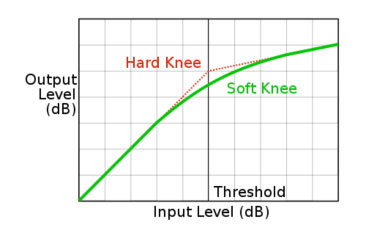maximedupre
New member
I've been through a couple of compressor explanations on different sites, but I still don't think I really understand what compressors do. This is what I understood (please tell me what I understood wrong and also some other tips to help me  ).
).
So basically, from what I understand, compressors don't have any effect unless the volume of a certain sound exceeds a number of decibels (that is set by the threshold). If the volume exceeds that number of decibels, the sound is compressed and the volume is decreased depending on the ratio (I don't have a ratio knob, instead I have an "amount" knob that goes from 0-100%, so I guess 100% would let 100% of the volume go through and 50 % would let 50% of the volume that passes the threshold go through, etc). The compression is done by increasing the volume of the highs but not the lows (when passing the threshold, more and more lows are not seeing their volume increased depending on the ration/amount). Also, the Gain Reduction is the number of decibels that got cut down by the compressor. The Knee just specifies how intense the compression should be. All of theses things I just said, I am not too sure if i am right or wrong, so please correct me if I'm wrong. I pretty much understand all of the knobs (''threshold", "Knee", "Amount", "Attack", "Release", "Gain"), but not so much the behaviour of the compressor.
Please help a future producer
 ).
).So basically, from what I understand, compressors don't have any effect unless the volume of a certain sound exceeds a number of decibels (that is set by the threshold). If the volume exceeds that number of decibels, the sound is compressed and the volume is decreased depending on the ratio (I don't have a ratio knob, instead I have an "amount" knob that goes from 0-100%, so I guess 100% would let 100% of the volume go through and 50 % would let 50% of the volume that passes the threshold go through, etc). The compression is done by increasing the volume of the highs but not the lows (when passing the threshold, more and more lows are not seeing their volume increased depending on the ration/amount). Also, the Gain Reduction is the number of decibels that got cut down by the compressor. The Knee just specifies how intense the compression should be. All of theses things I just said, I am not too sure if i am right or wrong, so please correct me if I'm wrong. I pretty much understand all of the knobs (''threshold", "Knee", "Amount", "Attack", "Release", "Gain"), but not so much the behaviour of the compressor.
Please help a future producer





 .
.